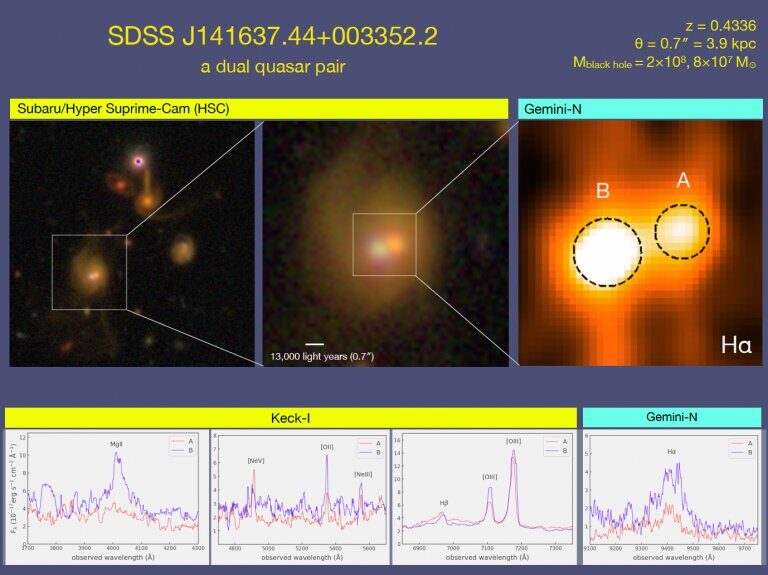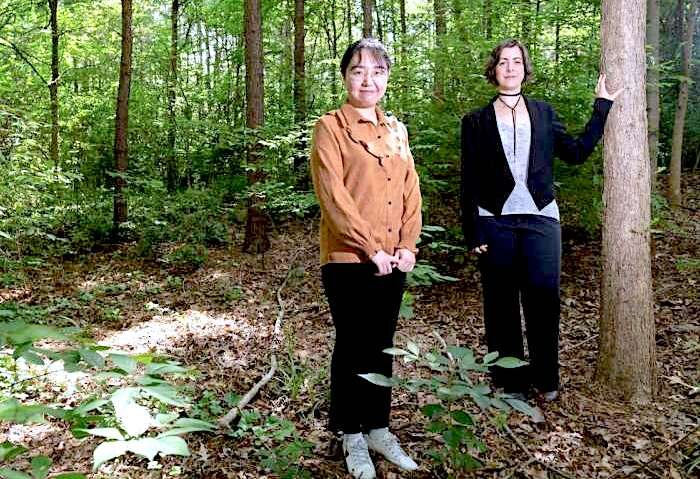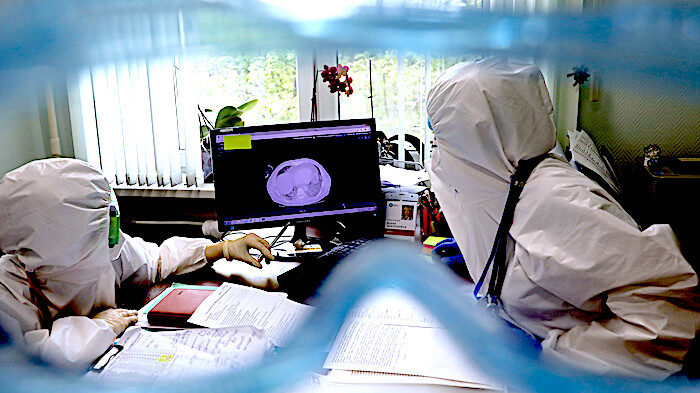
© Silverman et al.SDSS J141637.44+003352.2, a dual quasar at a distance for which the light reaching us was emitted 4.6 billion years ago. The two quasars are 13,000 light years apart on the sky, placing them near the center of a single massive galaxy that appears to be part of a group, as shown by the neighboring galaxies in the left panel. In the lower panels, optical spectroscopy has revealed broad emission lines associated with each of the two quasars, indicating that the gas is moving at thousands of kilometers per second in the vicinity of two distinct supermassive black holes. The two quasars are different colors, due to different amounts of dust in front of them.
A cosmic dance between two merging galaxies, each one containing a supermassive black hole that's rapidly feeding on so much material it creates a phenomenon known as a quasar, is a rare find.
Astronomers have discovered several pairs of such
merging galaxies, or luminous "dual" quasars, using three Maunakea Observatories in Hawaii — Subaru Telescope, W. M. Keck Observatory, and Gemini Observatory. These dual quasars are so rare, a research team led by the Kavli Institute for the Physics and Mathematics of the Universe at the University of Tokyo estimates only 0.3% of all known quasars have two
supermassive black holes that are on a collision course with each other.
The study published today in the August 26, 2020 issue of
The Astrophysical Journal.
"In spite of their rarity, they represent an important stage in the evolution of
galaxies, where the central giant is awakened, gaining mass, and potentially impacting the growth of its host galaxy," said Shenli Tang, a graduate student at the University of Tokyo and co-author of the study.



Comment: 'Response to warming'? More pertinent and useful would be to conduct research aimed at the effects of global cooling and resulting earth changes applicable to these habitats.